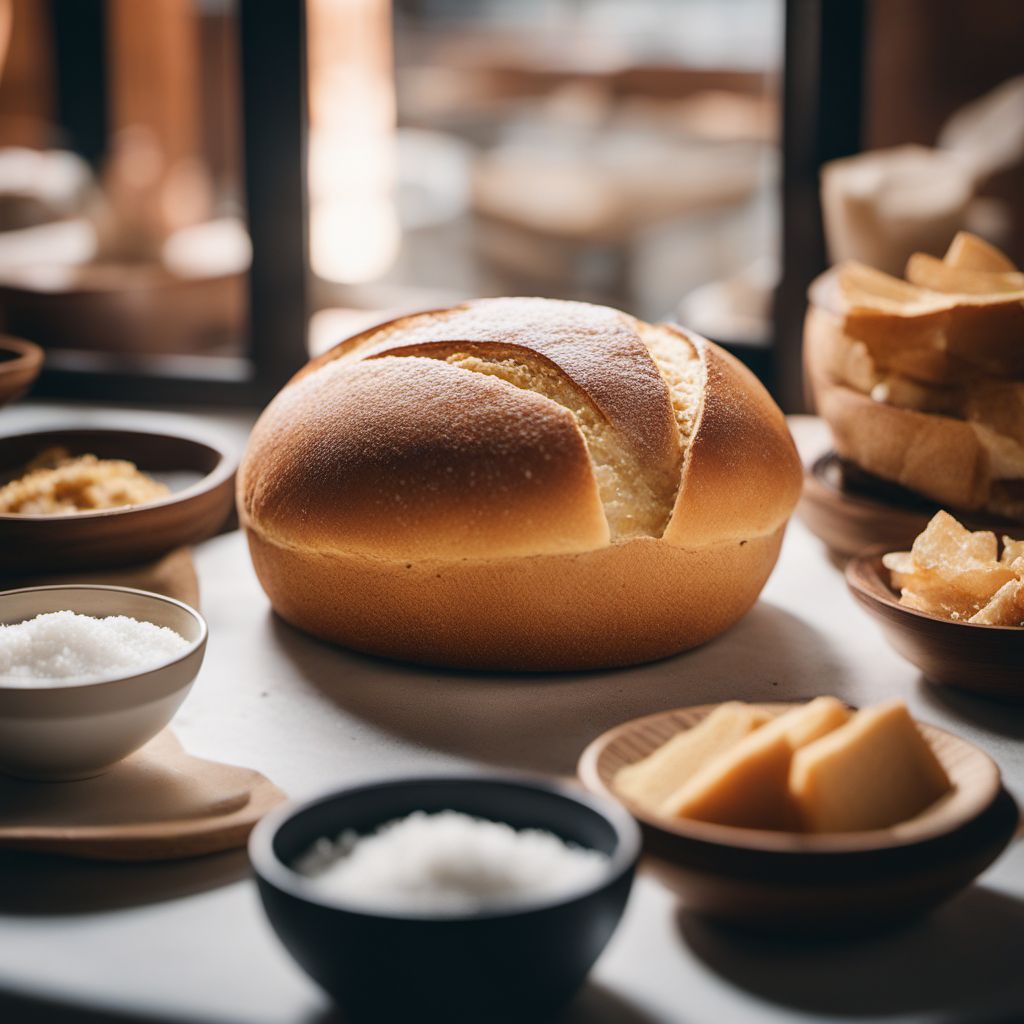
Dish
Salt-Rising Bread
Salt-rising bread is made using a starter that is created by fermenting milk and flour. The starter is then mixed with flour, salt, and other ingredients to create a dough. The dough is then left to rise for several hours before being baked. This bread has a unique flavor and texture that is loved by many. It is often used in sandwiches and as a side dish for soups and stews.
Origins and history
Salt-rising bread has been around for centuries and is believed to have originated in the United States. It was a popular bread during the 19th century and was often made by pioneers who were traveling westward. Today, it is still a popular bread in some parts of the United States and is enjoyed by many.
Dietary considerations
Salt-rising bread is not suitable for those who are lactose intolerant or have a milk allergy. It is also not suitable for those who are on a low-carb or gluten-free diet.
Variations
There are many variations of salt-rising bread, including those that are made with different types of flour and those that are flavored with herbs and spices. Some recipes also call for the addition of cheese or other ingredients to the dough.
Presentation and garnishing
Salt-rising bread can be presented in a variety of ways, including sliced or whole. It is often garnished with herbs or other toppings to enhance its flavor and appearance.
Tips & Tricks
When making salt-rising bread, it is important to use high-quality ingredients and to follow the recipe closely. The starter can be tricky to make, so it is important to be patient and to follow the instructions carefully.
Side-dishes
Salt-rising bread is often served as a side dish for soups and stews. It is also commonly used in sandwiches and as a base for bruschetta and other appetizers.
Drink pairings
Salt-rising bread pairs well with a variety of drinks, including beer, wine, and tea. It is also commonly served with butter or other spreads.
Delicious Salt-Rising Bread recipes
More dishes from this category... Browse all »

Acorn Bread
Native American cuisine

Alkubus
Moroccan cuisine

Almojábana
Colombian cuisine

Anadama Bread
American cuisine

Antiguan Butter Bread
Antiguan cuisine

Baati
Indian cuisine

Babà rustico
Italian cuisine

Baguette
French cuisine
More cuisines from this region...

Fusion cuisine
Bold, Unexpected, Innovative, Creative

Midwestern American cuisine
Savory, Hearty, Comforting, Rich, Creamy

Northeastern American cuisines
Salty, Sweet, Savory, Tangy, Creamy

Southern American cuisine
Savory, Spicy, Sweet, Tangy, Smoky

Southwestern American cuisine
Spicy, Bold, Smoky, Earthy, Tangy

Western American cuisine
Hearty, Flavorful, Savory, Spicy, Smoky

